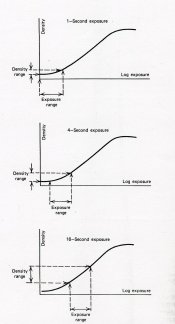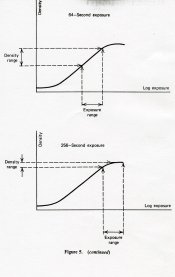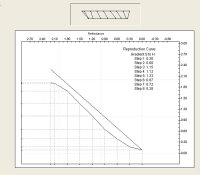markbarendt
Member
I like the style of the sketch, a lot.
You know "extra" and "over" can be pushed vertically to make good prints.
Actually no. Moving the curves up would make a very different prints.
The "over" curve could never print the same highlights as the other three could, that detail is simply lost somewhere above the shoulder, just as surely as if it were an underexposure at the other end of the curve.
The "extra" curve, on the other hand, would print different subject matter in each print zone if it were moved up, it would not produce the print we originally visualized/planned.
The "box" and "extra" curves though can both produce good prints with all the zones falling as planned producing nearly identical prints.





